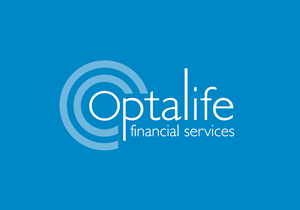The new Summer edition of The Price Predictor Index shows that residential real estate in 2023 has defied the dire predictions of economists and commentators who told us that house prices would drop at least 15% because interest rates were rising.
Sales activity and prices have become stronger as the year has evolved. Our analysis shows that markets throughout the nation are overwhelmingly upbeat: 71% of suburbs have positive sales activity trends, led by the 31% of locations which we classify as rising markets and the 26% which are recovering markets. Only 4% of suburbs are ranked as declining markets.
There are numerous municipalities nationwide where virtually every suburb has a positive (rising,
recovering or consistency) ranking in our analysis of sales activity trends and many outstanding precincts failed to make our National Top 10 Municipalities list because there were so many worthy candidates.
The rise of the three biggest cities, described in our Spring edition three months ago, has gathered further impetus.
Melbourne, Brisbane and Sydney all have 84-87% of their suburbs with positive momentum in their
markets, a dramatic turnaround since the start of calendar 2023.
But next in the national rankings are Regional Queensland, Regional South Australia, Regional WA and Regional Victoria, indicating that markets outside of the capital cities continue to deliver growth.
Overall, there is more powerful momentum in the cities than the regions. Seven of our National Top 10 Municipalities are capital city precincts – and 72 of the National Top 100 Supercharged Suburbs are located in capital cities.
Sydney is stronger than Regional NSW at present, Melbourne is outpointing Regional Victoria and
Brisbane is (slightly) ahead of Regional Queensland.
The dominant trend in 2023 has been recovery, initially, and then strong upward trajectories with sales volumes – but not everywhere is on board with the resurgence.
As Sydney, Melbourne, Brisbane and several regional markets move into overdrive, Canberra and Darwin are stuck in neutral and Perth – after being a nation-leading growth market for three years – is now in reverse.
The Perth market is showing the first signs of fading and has lost its position as a national growth leader (although it will take time before it shows up in the price data).
The Canberra market is the weakest we have recorded in the eight years of these quarterly surveys and the Darwin market has little energy (CommSec in the State of the States report ranks the ACT and the Northern Territory as the nation’s weakest economies).
This confirms that property markets are local in nature and it’s rare to see all markets moving in the same direction and at the same speed.
Currently, the top 5 markets (Melbourne, Brisbane, Sydney, Regional Queensland and Regional SA) are very strong and the bottom 3 (Canberra, Darwin and Regional Tasmania) are rather weak.
One of the key findings of our surveys in 2023 has been the emergence of unit markets and this trend has taken on greater force as the year has progressed. Suburbs where apartments dominate the dwelling mix are among the most powerful markets in Australia.
The National Top 100 list of Supercharged Suburbs includes 24 in Greater Sydney, of which half are
locations dominated by units.
Inner-city suburbs in Melbourne, Brisbane and Perth also feature prominently on this list, while the
National Top 10 Municipalities list includes the City of Melbourne, the City of Sydney and the Brisbane- inner precinct – as well as Gold Coast City, where a sizeable proportion of buyer demand is directed towards apartments.
The dominant paradigm of real estate (that houses on land show superior capital growth to apartments ) is being challenged.
While recovery, revival and resurgence are the dominant themes of Australian property markets, there are (as always) notable exceptions.
The most striking absentees from the lists of market jurisdictions where sales activity is strong are some of Australia’s most iconic Sea Change locations: Byron Bay, the Sunshine Coast, the Mornington Peninsula and the Central Coast.
The common feature of those four locations is that they experienced extraordinary uplift during the so- called Covid Boom and indeed overshot realistic market values in some cases.
The median price for Byron Bay more than doubled in three years, upmarket Sunshine Coast suburbs like Sunshine Beach achieved similar astronomical growth, while the Mornington Peninsula was the Victorian equivalent.It’s significant that while the upsurge across Greater Melbourne has been felt in almost every market sector, the Mornington Peninsula is a stark exception.
The Gold Coast is again a growth market but the Sunshine Coast is lagging. These places are having
longer and deeper corrections than other parts of the country.
So those are the highlights – but’s there’s so much more in the Summer 2023-24 edition of The Price Predictor Index.
It provides a ranking for every major suburb and town in Australia and alerts you to the markets that are likely to show good price growth – and warns you of the ones to avoid.
It’s justifiably one of our most popular reports and not to be missed by anyone wanting to plan a real estate move in 2024.













